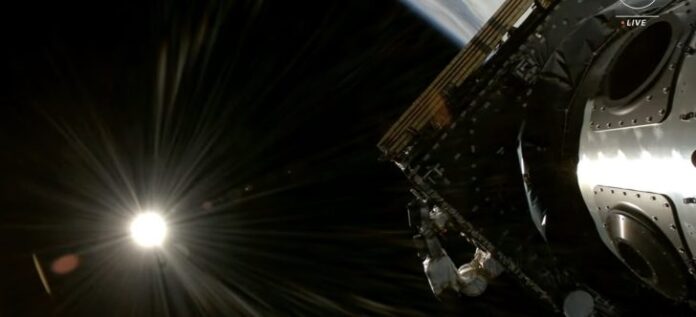
NASA and SpaceX successfully launched the PSYCHE spacecraft from the space agency's Kennedy Space Center (KSC) in Florida local morning time earlier today. The Psyche probe is a satellite that will orbit the metallic asteroid Psyche after spending six years traveling in space to reach its destination. It is part of NASA's efforts to investigate outer space bodies to enable scientific discoveries and discover clues behind the creation of the universe and the solar system. The satellite flew on SpaceX's biggest operational rocket, the Falcon Heavy, and the rocket will inject it into an interplanetary transfer orbit for its multi million mile journey.
SpaceX's Falcon Heavy Successfully Lifts Off From Florida After Weather And Payload Related Launch Delays
The Falcon Heavy lifted off from the KSC at 10:19 a.m. local time earlier today. Before today's launch, the Psyche mission had seen multiple delays, as first engineers discovered a problem with its cold gas thrusters, and then high upper level winds at the KSC yesterday forced NASA and SpaceX to stand down from the launch.
Today's mission comes as NASA revealed the first asteroid samples that it has ever dug up earlier this month as part of the OSIRIS-REx mission to the asteroid Bennu. However, unlike the Bennu mission, which saw a small piece of the asteroid brought to Earth, the Psyche mission is an imaging mission that will see the spacecraft fly around the asteroid at different altitudes that range from just a couple of dozen miles to hundreds of miles.
The Psyche asteroid was first discovered in 1852, and the asteroid is 173 miles wide with two crater like depressions. A day on Psyche lasts for four Earth hours, and before today's launch, NASA tested its mission on a testbed on Earth to simulate actual conditions to ensure smooth communications with Psyche during its launch. NASA also tested the Psyche spacecraft on Earth to confirm its ability to withstand temperature extremes and the high vibration environment during the Earth escape phase of launch.

Since the Psyche spacecraft has to travel to another celestial body, it must wait longer than typical satellite missions before separating from the Falcon Heavy's second stage. This orbit also forced SpaceX to reuse only two of the three rocket boosters that are part of the Falcon Heavy rocket since the higher orbit requires more fuel, making landing a rocket difficult.
The launch itself was a standard SpaceX launch apart from three rocket boosters lighting up and flying. The two Falcon Heavy side boosters separated roughly two and a half minutes after liftoff. Then they landed a couple of minutes later at the Cape Canaveral Space Force Station after producing large sonic booms. SpaceX's Psyche mission profile sees the second stage's Merlin vacuum engine fire for the second time roughly half an hour after fairing separation.
NASA believes that the Psyche asteroid was once part of a larger celestial body, which makes it hot on the inside and provides its core with higher mass and density due to internal heat and pressure. These properties are also behind the Psyche mission's objectives, as NASA seeks to understand more about the asteroid's past. Psyche is one of the largest among the nine metallic asteroids that NASA has discovered in our Solar System, and to make its way to the Psyche asteroid, the Psyche spacecraft will use Hall thrusters that have reduced fuel consumption by roughly 15 times when compared to traditional chemical thrusters. NASA will be able to make global maps of the elemental composition of Psyche simply by flying around it, allowing the agency to better understand the nature of the metallic asteroid.
WccftechContinue reading/original-link]




